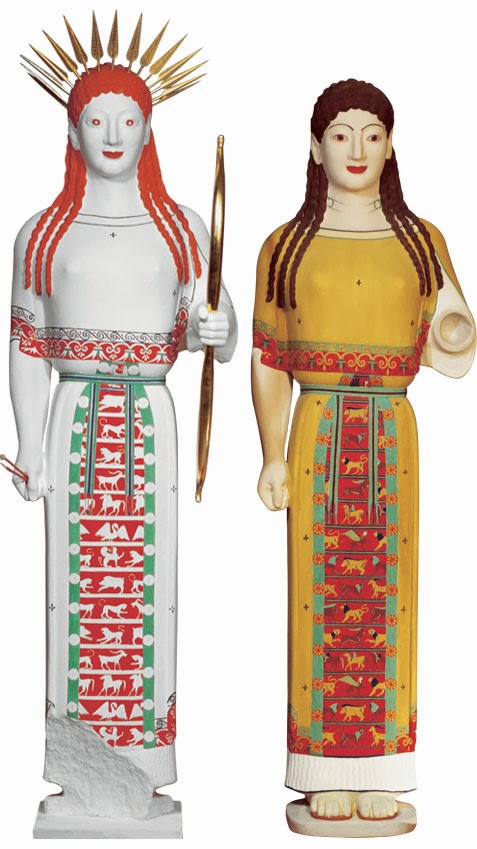I'm familiar with these few examples. From that you deduce what, exactly? Lighter hair was found sporadically among people of the Anatolia Neolithic, Jovialis has pointed out a cluster of lighter haired people in the Galilee, and the steppe people picked up some of those lighter alleles from the farmers of Europe, as was detailed in a recent large paper on pigmentation with regard to Europeans.
So, yes, there were some lighter haired people among the ancient Greeks. I doubt they would have picked up the alleles from the darker Neolithic Greeks, so, it must be, as the latest pigmentation paper pointed out, something picked up from the Central European Neolithic people. The Etruscan frescoes show some lighter haired people as well, interspersed among the predominantly darker haired majority.
Indeed, some of the patrician Latin families also were known for having lighter hair and eyes i.e. the Claudians. Caesar, on the other hand, reputedly had black eyes.
I don't see the big whoops.
Where there was less sun, more cloud cover, evolution favored it more. Having skin like that present in the Celtic fringe would be a serious handicap in Sicilia or the Salento.







